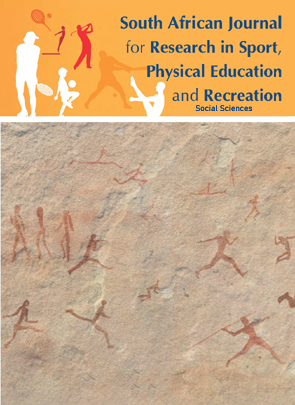COMPARISON OF INTENSITY MARKERS AND CARDIORESPIRATORY RESPONSES IN MEASURING MAXIMUM OXYGEN CONSUMPTION BETWEEN A NON-MOTORISED AND MOTORISED TREADMILL PROTOCOL
Main Article Content
Abstract
The objective was to compare cardiorespiratory parameters between two graded exercise protocols to determine which one is most appropriate for training prescription for male university level distance runners. The graded exercise tests, namely the Adapted Incremental Speed Protocol (AISP), and the Adapted Non- Motorised Incremental Speed Protocol (ANMIP) was used to compare several cardiorespiratory responses, as well as two intensity markers: the ventilatory threshold (VT) and the respiratory compensation point (RCP). The maximal oxygen
consumption (V̇ O2max) value of the ANMIP significantly (p<0.05) exceeded that of the AISP within a significantly (p<0.05) shorter time frame (8:19±0:52 vs. 11:25±1:11min). The percentage of V̇ O2max where VT and RCP were attained, was significantly higher (p<0.05) on the ANMIP (84.11±4.25 vs. 97.16±2.35%) compared to the AISP (75.74±7.84 vs. 93.3±3.86%). Consequently, the ANMIP is perceived substantially more difficult, both physiologically and psychologically. It can therefore be considered an ideal training tool to intensify exercise load with more time efficient training sessions for a distance running population. However, the obtained V̇ O2max results during the ANMIP could overestimate exercise prescriptions and should therefore not be used for these purposes.

